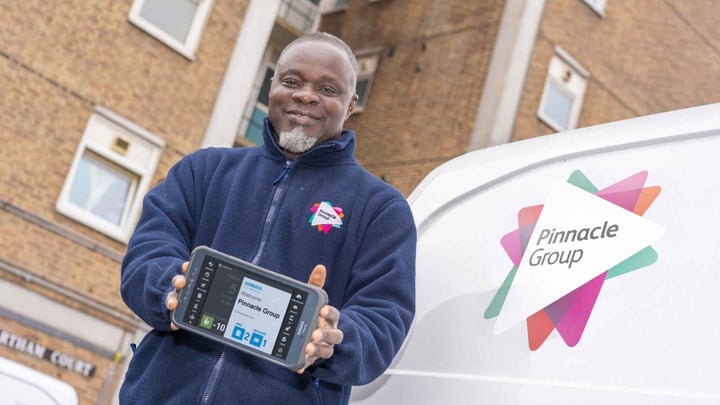Customer Effort Score: Three Ways to Address the Rising KPI
Jul 30, 2019 • Paul Whitelam • field service • field service engineers • field service management • service engineers • Service Management • Uncategorized • Customer Satisfaction and Expectations
Paul Whitelam, VP Product Marketing, ClickSoftware, outlines why turning to look at how effective our customers’ are at dealing with issues can shine a light on your own performance and productivity...
Whether trying to get more jobs done in a day, more jobs per technician per year, or more fixes achieved on the first try, there are plenty of time-tested ways to show improved field service performance through metrics.
But if you’re still not sure that your field service is delivering peak performance, it might be time to look in a surprising place for a new set of KPIs: your customers. How hard are they working? At a time when every business is obsessed with delighting their customers, many underestimate the role customer effort plays in determining the quality of the experience.
The Customer Effort Score is a new KPI that measures how much effort your customers put into getting an issue resolved. If retaining loyal customers is a priority for your business, read on.
When your customer goes to work
Today, you can order something online in a matter of seconds and get it the same day. You can even hail a ride in minutes at the click of a button. Companies like Amazon and Uber are making it effortless for customers to receive great service. These on-demand businesses have set a high standard for all service organizations.
Great customer experience can begin as soon as an issue arises. Great customer experience can begin as soon as an issue arisesIt can start with their first phone call, their visit to your appointment booking portal, or how they are notified of the technician’s ETA.
The same is true for bad experiences. To uncover all the ways you could ease your customer’s pain even before you fix their problem, consider every potential interaction with your business. Here are three ways field service organizations can reduce customer effort.
1. Enable true self-service
To some, self-service means troubleshooting and problem solving done by the customer. For others, the definition includes providing ongoing access to important information that helps the customer not only treat issues but continually get the most value from their product or service.
This also should be extended to include how easy it is for the customer to request help or information, book an appointment, or speak directly to a representative. Much of this can be accomplished with a well-designed and easy-to-navigate website, connected to a knowledge management system that shares information consistent with what your employees see.
2. Empower everyone involved
For every step of the service journey, you want customers to feel in control of the process and that you’re treating their time with respect. Dispensing confusing or incomplete information does not help.
Your front-line employees should also be empowered to do the best job they can. Will they have prior access to the customer’s case so they can arrive prepared? Will they be routed to a job site with the correct parts and equipment already in their vehicle? Can your call center and mobile employees make decisions based on flexible or well-defined policies to reach to a satisfying resolution faster?
Imagine a customer who needs to explain a problem to the newly-arrived technician after already doing so over the phone or online, and then is unable to get the problem fixed due to a missing part or lack of skills. Now they have to restart the process to make a new appointment. How would they rate their effort on a 1-5 scale?
3. Integrate, integrate, integrate
To enable the control, transparency, and empowerment customers want, tight cross-channel and cross-team integration is critical. While customers might prefer phone agents over automated chat bots or SMS, ultimately, they want the option that gets them the help they need as quickly as possible.
However many channels you offer for communication, ensure customers are easily transferred and that information is shared seamlesslyHowever many channels you offer for communication, ensure customers are easily transferred and that information is shared seamlessly. You want to minimize the times your customer is sent to another department. But if it’s unavoidable, you can send them along with all the relevant information so they don’t have to start over with the next person on the phone.
Similarly, the way your field service professional interacts with your customer should be standardized and consistent with your brand. Integrate your communication channels, your CRM, as well as your processes and policies, to consistently deliver service that minimizes customer effort.
High effort is inversely related to good experience
User experience designers who work on everything from smartphone apps to retail spaces understand that minimizing friction and effort is good for customer experience, retention, and repeat business. Research by Gartner and Forrester encourages businesses to focus on how they can lower customer effort to win hearts and minds. Making your customers feel that their time is valued and auditing for areas of improvement is a great starting point.
Besides boosting your workforce efficiency and productivity, examine where your organization can minimize customer effort. This creates seamless experiences from the moment the need for service arises. Your customers will thank you with their loyalty.
Be social and share




















 Field Service News is published by 1927 Media Ltd, an independent publisher whose sole focus is on the field service sector. As such our entire resources are focused on helping drive the field service sector forwards and aiming to best serve our industry through honest, incisive and innovative media coverage of the global field service sector.
Field Service News is published by 1927 Media Ltd, an independent publisher whose sole focus is on the field service sector. As such our entire resources are focused on helping drive the field service sector forwards and aiming to best serve our industry through honest, incisive and innovative media coverage of the global field service sector.
Leave a Reply